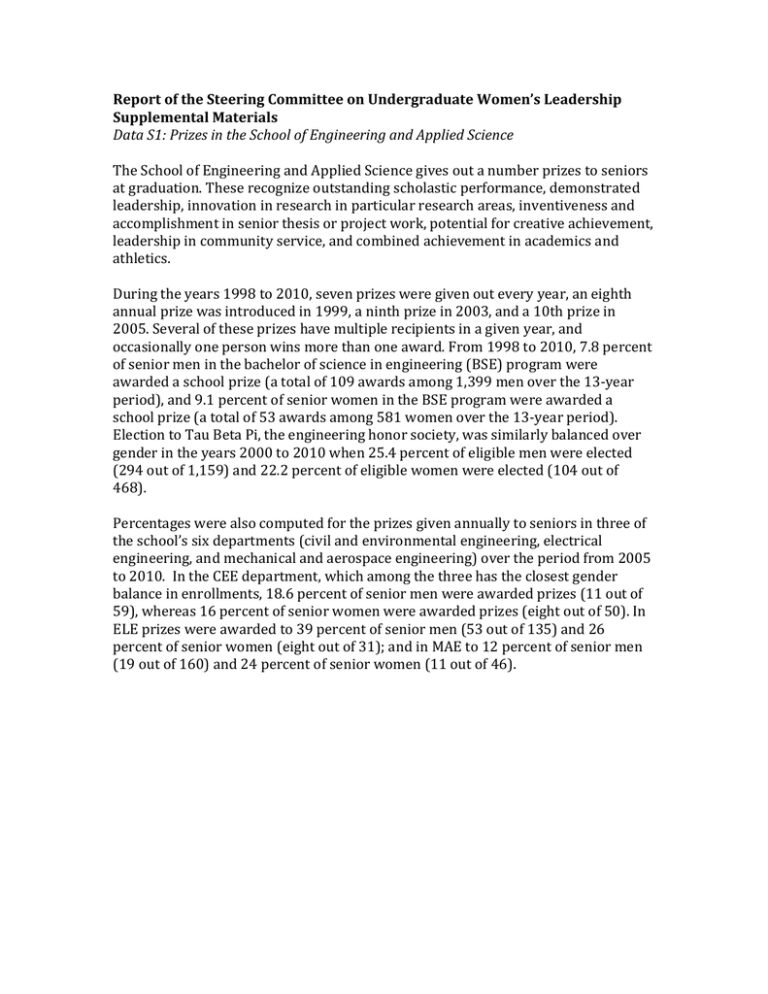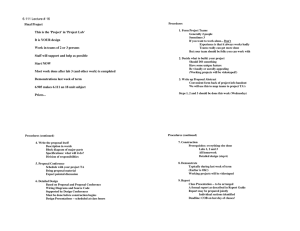Report of the Steering Committee on Undergraduate Women’s Leadership Supplemental Materials
advertisement

Report of the Steering Committee on Undergraduate Women’s Leadership Supplemental Materials Data S1: Prizes in the School of Engineering and Applied Science The School of Engineering and Applied Science gives out a number prizes to seniors at graduation. These recognize outstanding scholastic performance, demonstrated leadership, innovation in research in particular research areas, inventiveness and accomplishment in senior thesis or project work, potential for creative achievement, leadership in community service, and combined achievement in academics and athletics. During the years 1998 to 2010, seven prizes were given out every year, an eighth annual prize was introduced in 1999, a ninth prize in 2003, and a 10th prize in 2005. Several of these prizes have multiple recipients in a given year, and occasionally one person wins more than one award. From 1998 to 2010, 7.8 percent of senior men in the bachelor of science in engineering (BSE) program were awarded a school prize (a total of 109 awards among 1,399 men over the 13-year period), and 9.1 percent of senior women in the BSE program were awarded a school prize (a total of 53 awards among 581 women over the 13-year period). Election to Tau Beta Pi, the engineering honor society, was similarly balanced over gender in the years 2000 to 2010 when 25.4 percent of eligible men were elected (294 out of 1,159) and 22.2 percent of eligible women were elected (104 out of 468). Percentages were also computed for the prizes given annually to seniors in three of the school’s six departments (civil and environmental engineering, electrical engineering, and mechanical and aerospace engineering) over the period from 2005 to 2010. In the CEE department, which among the three has the closest gender balance in enrollments, 18.6 percent of senior men were awarded prizes (11 out of 59), whereas 16 percent of senior women were awarded prizes (eight out of 50). In ELE prizes were awarded to 39 percent of senior men (53 out of 135) and 26 percent of senior women (eight out of 31); and in MAE to 12 percent of senior men (19 out of 160) and 24 percent of senior women (11 out of 46).


